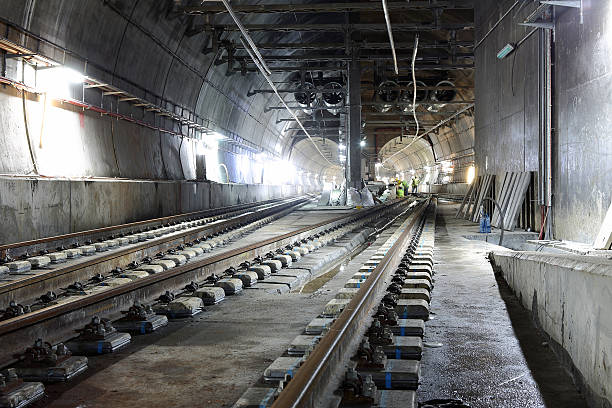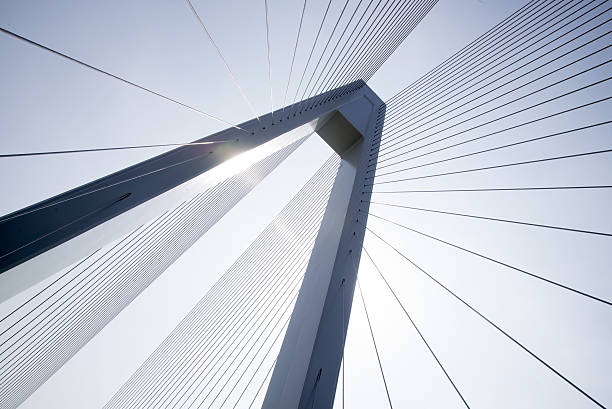The National Audit Office (NAO) has called for a “reset” at High Speed 2’s (HS2’s) Euston terminus as the current plan is forecast to be £2.2bn overbudget and could worsen with the two year pause on construction. The public spending watchdog’s new report into the decision making and expenditure on HS2’s Euston station explains that HS2 Ltd’s budget for the terminus was £2.6bn in 2019 prices, which was made part of the Department for Transport’s (DfT’s) overall budget for Phase One of the project. However, the NAO has said “the budget for Euston station was fixed too early and too low for what was intended to be achieved”, and decisions made to try and bring the station construction within that budget have been unsuccessful. The latest estimate has put the projected cost of the station at £4.8bn. This month, the DfT announced that it will pause construction on HS2 Euston for two years and “rephase” its delivery while it looks again at how to achieve and affordable and deliverable design that provides value for money. Last week HS2 Ltd commenced the redundancy process at the station site. “The impact of deferring spending on the HS2 programme in the short term will be additional costs and could lead to an overall increase in spend in the long term,” the NAO said in the report. “This is due to the costs of, for example, its supply chain stopping and re-starting work; contractual changes; and managing the site and project for longer.” It added: “DfT and HS2 Ltd do not yet know what the impact of this pause will be on the overall schedule of the HS2 Euston station and when it will open.” In 2020, Doug Oakervee carried out a review into the Euston HS2 project and said that the original 11-platform two-stage build was not satisfactory. A new 10-platform single stage build design was revealed in autumn 2021, which was intended to simplify the process and reduce costs. The previous design – on which £106M had been spent – was mothballed. The new design “addresses previous issues relating to the design and build of the station but it did not solve the challenge of designing a station within budget,” the NAO has stated. The DfT and HS2 conducted a series of reviews to find ways to bring down the cost of the station, working with its construction partner (Mace Dragados JV) and other stakeholders to identify more than 600 areas of cost savings. Despite this, the NAO has concluded that the station cannot be delivered within budget.

The Budget Pressures On the Station Have Been Compounded.
by inflationary cost pressures across the DfT’s capital programme. The NAO states: “DfT and HM Treasury will need to consider how best to control the budget for the HS2 programme in future years, as its large size and uncertainties around inflationary pressures make it difficult to manage as part of its wider infrastructure spending.” The Treasury has said that it is open to considering the case for additional funding. A major complication at HS2 Euston has been the confluence of three separate major infrastructure works on the site, each managed separately. These are construction of the HS2 Euston terminus, redevelopment of the Network Rail Euston station and the over site development above and around both stations that will feature new housing and commercial plots. The Oakervee Review of 2020 identified the independent governance arrangements for these three projects was sub-optimal and that coordinated, long-term arrangements must be put in place to maximise the benefits and build momentum for all three. The Euston Partnership between DfT, HS2 Ltd and Network Rail was established in 2021 to better join up the different bodies working at Euston, but this has not solved all of the issues. The Euston Partnership is not a decision-making authority; the DfT retains responsibility for decisions on funding while delivery bodies remain responsible for delivery and managing risk. “Delivery bodies and wider stakeholders have found it difficult to manage competing priorities and agree decisions, especially as there is no efficient mechanism for the delivery bodies to trade off between them the scope of their work and associated funding,” the NAO report stated. Further to that, “there is not yet a comprehensive and detailed integrated plan for the whole programme of works at Euston, which makes it harder to identify and manage key interactions and dependencies between the projects”, according to the NAO. HS2 Ltd had continued work on its Euston station on the assumption that the Network Rail upgrades would be funded and integrated, but the outline business case for the Network Rail Euston redevelopment has not yet been submitted or signed off. “HS2 Ltd has therefore proceeded under the risk that decisions may be further amended or that early decisions taken now may constrain later designs”, the NAO stated. One advantage of delaying the works on HS2 Euston is that it might bring the timetable more in line with the upgrades to the Network Rail Euston station, which could ease integration.

The NAO Has Concluded That a Reset at Euston is Required. It has Made These Recommendations:
DfT and HS2 Ltd should learn lessons from how other projects have approached a reset, including having clear aims and establishing clear measures to monitor its success DfT should work with the Euston Partnership, HS2 Ltd, Network Rail, Lendlease and local partners to clarify a shared understanding and expectations for the Euston programme in light of the changes and the affordability challenge DfT and HS2 Ltd should apply the lessons from Euston to the HS2 Manchester stations and other parts of Phase 2b of the HS2 programme. These include ensuring a robust cost estimate is used to set the budget and contingency, supported by appropriate assurance and a clear understanding of how costs risks are shared DfT should ensure that the decisions it and HM Treasury make on the Network Rail station’s outline business case provide the long-term clarity required on the extent to which the two stations need to integrate DfT should revise the anticipated HS2 programme schedule, costs and benefits to reflect recent decisions on scope and schedule DfT, HS2 Ltd and HM Treasury should consider how best to manage the budget for the HS2 programme to best protect value for money. This should include consideration of re-setting budgets and costs in 2023 prices; whether inflation risk is best held by DfT or Treasury; how far forward budgets can be set when there are high levels of uncertainty around inflation; revisiting financial controls that allow for flexibility in spend between years; and identifying opportunities for contractual changes with the supply chain Independent rail consultant and HS2 advisor William Barter commented: “From the NAO report, it appears that the single-stage, 10-platform design for Euston, touted by Mark Thurston and others as ‘simple and efficient’, is anything but! “The Oakervee review led to the fundamental error of separating planning of a railway – HS2 – from planning of its terminus – Euston. As a result, this so-called ‘simple and efficient’ Euston station had two fatal flaws. Ten platforms are not enough to run an ultimate 18tph service whereas the original 11 platforms would do that. A two-stage build gets the Phase One 10 trains per hour into Euston, releasing West Coast Main Line capacity after stage one, but a single stage build means no meaningful benefits until completion.” Barter added that the current plan to have HS2 services terminate at Old Oak Common, in West London, can only be a stop-gap, as it incurs most of the costs of HS2 Phase One but a fraction of the benefits.

Six Platforms Would Be Enough to Run the Phase One Services.
to Birmingham to begin with, Barter has said, but it is currently unclear how many more will be needed. He pointed out that while there is uncertainty around a replacement for the Golborne link and what will happen to the promise to get HS2 trains to Leeds, “we don’t know what the other platforms are meant to and handle and when, if indeed ever, they will be needed”. He believes that the 10-platform design is “unworkable” and should be dropped in favour of a reversion to 11 platforms. He continued: “The objective now must be a two-stage build to cope with the uncertainty and inter alia meet the government’s current requirement to spread costs even at the expense of increasing costs. As to the number of platforms, take the opportunity to go back to 11.” Barter believes this will aid in Network Rail’s redevelopment. He explained: “In the Hybrid Bill 11-platform scheme, my only worry was the number of platforms remaining available to Network Rail, which would have been numbers 1 to 13 of the present station. This requirement is very difficult to judge, due to the DfT’s reluctance to specify a ‘released capacity’ train service. But in an exercise for HS2 Ltd in 2014, I was able to plan a proposed post-HS2 service into 13 platforms, although noting that extra pointwork would be necessary to cope with an intensified operation. “As it is, after a single-stage build the Network Rail platforms, in terms of trains per platform per hour, will be the least utilised in London, whilst the capacity of HS2 is hampered forever.” Railway engineer and writer Gareth Dennis said: “The NAO’s report only confirms what many in the industry have already been saying – that tripping up the construction process of Euston at the eleventh hour for a redesign that was purported to save only around £800M would end up saving nothing. And here we are, in precisely those circumstances. “Reducing the size of the station was already a bad idea from a future-proofing perspective, but making it a one-stage build has created a myriad of operational and constructability issues. To get things back on track, serious questions need to be asked about the level of design control currently given to the over site developer. This project is supposed


Recent Comments